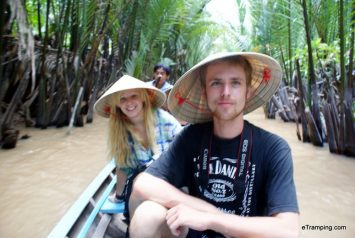
Piotr Kulczycki is a CEO at Photler.com and keen travel photographer who visited over 100 countries already. It takes a lot of time to do, but creating online portfolio with web builder he provides does not. On top of that you can try it for free and enjoy free photography guides to take a step closer to being professional photographer.
Quick Navigation
TogglePrepare your camera for challenges
You’ve already booked flights and accommodation. No wonder that you’re excited – holidays are about to start! Then it comes – packing. Probably you’ve learned a lot about your destination, so as to be prepared for different culture or climate. However, did you remember about your camera that is extremely sensitive to weather conditions?

This blog post will tell you how to protect your gear in different weather conditions. Think about it in advance, so as to take amazing photos during your trip.

Hot Conditions
If the sun is burning, you have to shelter your camera in a: people, cars, or preferably buildings shade. If there is any – you’re lucky. But what on earth to do on the desert or in any place without shadow? Well, just create one. Build a canopy with a towel or a t-shirt.

Moreover, always remember to take a break from time to time and come back to your air-conditioned car – this will allow the sensor of your camera to rest. However, don’t change temperature for your gear suddenly, because rapid temperature swings can be harmful to all electronic devices as well.

Dust or sand?
You don’t have to go to a desert to imperil your gear – the beach is enough. Maybe a sand grain seems tiny, but it can cause huge damage. That’s why, your goal is to keep it as far from your camera as possible.

In order to protect your lens use UV filter. It’s cheap, so it won’t be a big deal if there appear some scratches and you’ll have to replace it. Counterintuitive, a good protection option might be purchasing an underwater case because despite, it’s more expensive, it’s an impossible barrier to cross for all scattered grains.

What’s more, avoid putting your bag on the ground (otherwise, sand will get inside and probably cause damages) and after coming back home – launder it.
If you want to change lenses or a memory card, wait until there is no wind spreading sand. Preferably, do it inside your car or a building. If there is none – ask yourself, if great pictures make up for gear losses. If so, take the risk.
Cold Conditions
If you love photographing winter landscape remember, the battery will be flat sooner in such conditions rather than in the room temperature. If this happens – it dies when you still dream about some epic shots – take the battery to your pocket for a moment to warm it up. Afterwards, you should manage to take a few more pictures.

However, a better option is to carry spare batteries – keep them in your inside pocket of your coat in order to prevent them from losing warmth.

Wet Conditions
Snowflakes as well as raindrops are so tiny and dangerous as dust grains, so beware. Do the same as all producers of electronic devices – just put Silica Gel sachets in your bag. They will simply absorb moisture. Unfortunately, despite all precautions, every now and then, small amount of snow or rain can get inside and put your camera in a serious danger.

Remember, if you are surprised by a rain or snowfall, you can always put your camera in a grocery bag and cut out a hole for a lens. Such solution is available in almost every place and it’s the cheapest option.

Using underwater case or rain covers is a clever trick too, but it requires planning in advance and spending more money. However, if you invest in a reliable gear, you’ll definitely not regret it. In order to keep water away from the lenses use lens hood. Unfortunately, if there is a strong wind it might not help.

I hope, you’ll find these simple tips helpful and even if the weather gets harsh, you’ll manage to face it and come back home with stunning photos.
If you’d like to read more amazing tips from Piotr, head to the article he has written for eTramping before on 10 ways to take unique travel photos.


